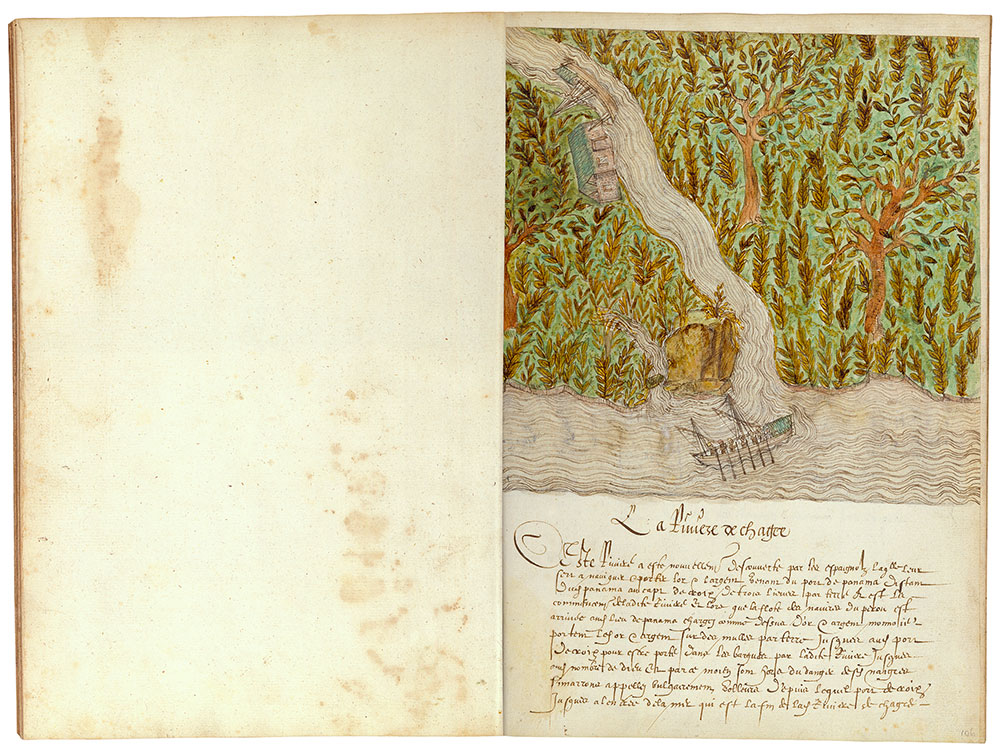
Histoire Naturelle des Indes
Illustrated manuscript
Bequest of Clara S. Peck, 1983
In 1983, The Morgan Library & Museum received, as the bequest of Clara S. Peck, an extraordinary volume whose beautiful paintings and descriptions document the plant, animal, and human life of the Caribbean late in the sixteenth century. Spaniards had already begun to exert influence over the indigenous people of the area when explorers from England and France arrived, among them Sir Francis Drake. The volume, known as the Drake Manuscript and titled Histoire Naturelle des Indes when it was bound in the eighteenth century, gives us a wonderful picture of daily life at the time of Drake's many visits to the region. Although Drake's connection to the manuscript is uncertain, he is mentioned on more than one occasion by the authors. Drake himself is known to have painted, but none of his work survives.
Contents: 199 images of West Indian plants, animals and human life, with accompanying manuscript captions written in late sixteenth-century French.
Medium: Most of the illustrations consist of a black chalk underdrawing and a combination of pen and brown ink with watercolor; on some images selected areas have also been glazed with a gum.
Binding: Bound or rebound in brown leather in the late 18th century.
Pagination: Penciled folio numbers (1–125) in lower right corner of each page were added by The Morgan Library & Museum. Folios 92v–93, 93v–94, and 95v–96 are fold-out leaves.
La Riuiere De Chagee (The Chagres River)
This river has been recently discovered by the Spaniards. It serves their shipping and carries gold and silver from the port of Panama distant by three leagues over land from Cap La Cruz in Panama and is the beginning of said river. When the fleet of ships from Peru arrives in Panama laden with gold and minted silver, they carry the gold and silver on mules over land to the Port of La Cruz in order to ship it in barges on said river to Nombre de Dios, thus avoiding the danger from the runaway negro slaves, commonly called thieves, from the port of La Cruz to the entrance of the sea which is the end of the river,
